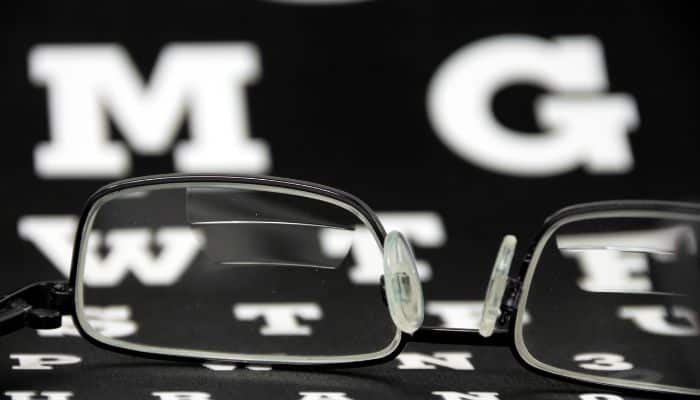Trifocal glasses are eyeglasses specifically designed to provide visual correction for individuals needing help with near, intermediate, and far vision.
They have three distinct corrective regions built into the lens: one at the top for distance viewing, one in the lower middle area for intermediate distances, and one at the bottom for near vision.

Who Should Wear Trifocals?
Trifocal lenses are most often used by those who need help with both reading and non-reading tasks, such as people over age 40 who typically experience changes in their eyesight due to presbyopia.
The way it works is that the wearer shifts their gaze between these three distinct areas of the lens in order to see objects clearly up close, at a mid-range distance of about 2 feet away, as well as in the distance.
Trifocal lenses can be particularly helpful for people needing help seeing computer screens, dashboards or other intermediate distances when driving, as well as reading books and newspapers.
While trifocals provide more vision correction than standard bifocal lenses, they still take some time to get used to for most wearers.
If you’ve worn bifocals before, the addition of the third viewing segment (intermediate) is a plus, but the tradeoff is that the available surface area for viewing each segment is reduced, which can be somewhat bothersome.
Benefits of Trifocal Lenses

The primary advantage of trifocal lenses is that they provide more comprehensive visual correction than standard bifocals.
With three distinct viewing areas, the wearer is better able to switch between near, intermediate, and far distances with greater clarity. This makes them an excellent choice for those who need help seeing objects up close and at mid-range, as well as far away.
Furthermore, trifocal lenses can be customized to the wearer’s specific vision needs and lifestyle.
For example, a person who reads a lot may prefer more power in the near-vision area of the lens, while someone who does more computer work might choose to have more power in the intermediate viewing region.
This allows the wearer to get an optimal fit according to their individual vision needs.
Disadvantages of Trifocals

One of the main disadvantages of trifocal lenses is that they can be more difficult to get used to than bifocals.
This is because the three distinct viewing segments require the wearer to constantly adjust their gaze in order to take advantage of each region.
Additionally, the smaller area available for viewing in each segment can limit your field of vision or create visual disturbances such as image jumps, where you see an object appear to move when you switch from one power to another.
Trifocals may also require a larger frame to accommodate the three viewing segments, so your choice of frames may be more limited.
Finally, trifocal lenses are less customizable than progressive lenses. It’s one reason why progressives are usually preferred over trifocals when considering multifocal eyewear.
Bottom Line
Trifocal lenses provide improved vision for individuals who need help seeing items at various distances. If you can adjust to the available vision in the three areas of the lenses, trifocals can provide an excellent solution for your vision needs.
Though, nowadays, most people considering multifocal lenses generally go with progressive no-line lenses since they provide a seamless viewing experience.
If you’re considering trifocal glasses, it’s best to consult with your eye care professional first to ensure a proper fitting and prescription.